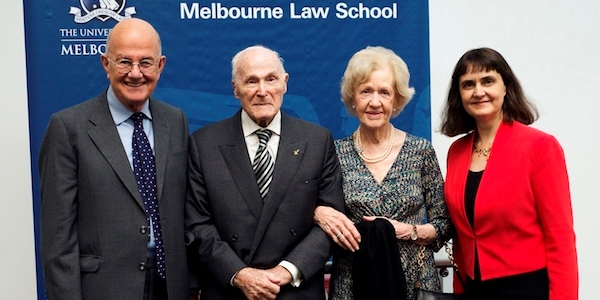Magna Carta: destiny or accident?
Whoever and wherever we are, we should all have the same rights.

This crucial idea was years ahead of its time upon its publication within the Magna Carta eight centuries ago.
But was creation of the revered document in which it was outlined destiny or accident?
This was the question discussed by The Right Hon the Lord Igor Judge, Chief Justice of England and Wales, at the 2015 Nathan Jacobson Lecture on Monday night.
King John of England sealed the first Magna Carta in 1215; successive documents were sealed in 1216-17 and 1225.
Lord Judge labelled this period "a generation of charters", with equivalent charters being issued by other monarchs on the European continent.
But whilst other charters "withered and decayed" over time, Lord Judge said the Magna Carta "emerged as the first, and still, to my way of thinking, the most important, of all legal codes meriting the description 'living instrument'."
"And its story established the wonderful flexibility of the common law."
Magna Carta was confirmed more than 50 times by English kings well into the fifteenth century.
"At each confirmation its evolved meaning became embedded. Each new iteration confirmed what had become its current meaning," Lord Judge said.
The common law the document established, as Lord Judge explored, extended to Australian shores with colonists who enjoyed the same rights as if they were English citizens at home.
"Gradually, in social conditions and societies which are remote from our own, Magna Carta and what Magna Carta was believed to stand for became part of the fabric of our political thinking," Lord Judge said.
"As the centuries unfolded, it came to be exported to places which none of those assembled at Runnymede had ever heard of, like the future United States of America, and Australia itself.
"America, and its ideas of constitutional legal freedoms came to be encapsulated in the Universal Declaration of Human Rights, which was described by Eleanor Roosevelt, one of its architects, 'as a Magna Carta for the modern world'."
But the context in which the Magna Carta was issued, in a time when religion and politics were enmeshed and England was breaking into civil war, could have seen a different outcome.
What if King John did not succumb to the pressure of those rebel barons under which he sealed the document?
What if he did not submit to Pope Innocent III, allowing the Pope to become both the spiritual and feudal power of King John's land, in order for the King to satisfy his worries about his immortal soul?
It was brewing dissatisfaction between King John, backed by the Church of England, and the rebel barons with the City of London on their side, which led to the sealing on 15 June 1215.
"Magna Carta did not emerge, Hollywood style, like a bright apparition, with reverberating violins playing ascending chords, from the muddy, misty field at Runnymede," Lord Judge said.
"It was set, as all historic events are set, within its own context."
So, was all of this, including its lasting legacy, destiny or accident?
"You can make up your own minds whether this was luck or judgment, accident or destiny, inevitable or fortuitous," Lord Judge said.
"(But) the Magna Carta has to survive because it is our responsibility to make it survive, and we must accept that responsibility.
"It is the banner, the symbol, of our liberties."
Among those in attendance of the lecture were Nathan Jacobson OBE (LLB 1946), Chief Justice of the Supreme Court Marilyn Warren, and Chief Justice of the Family Court Diana Bryant.
By Andy Walsh